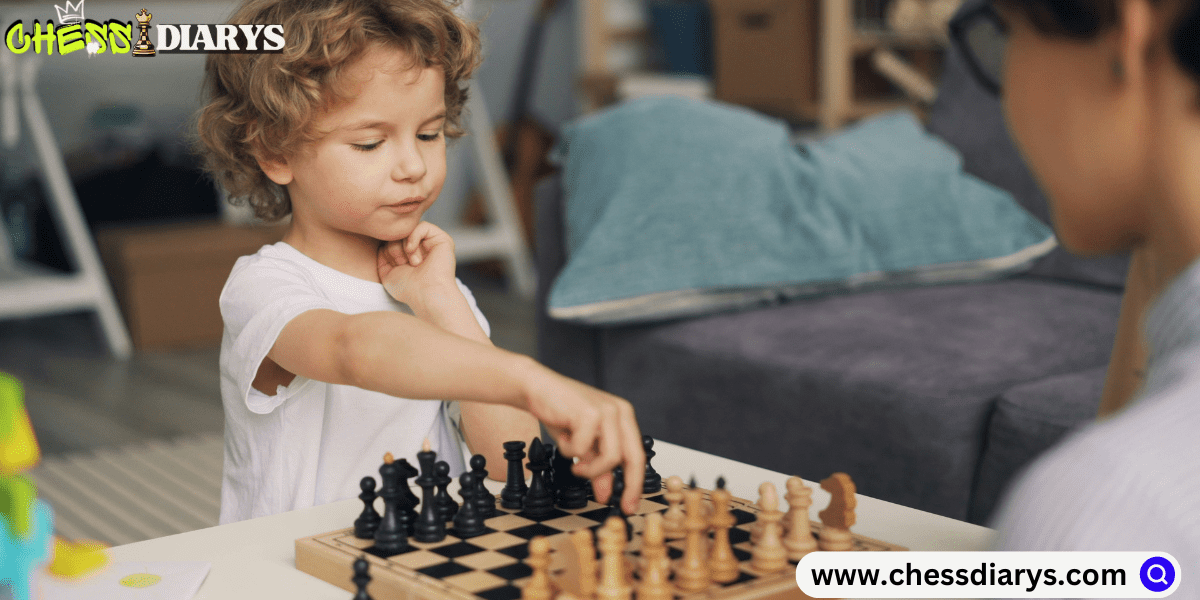Chess, frequently hailed as the “game of kings,” has involved gamers for centuries with its deep strategic factors and complicated rules. Whether you are drawn to chess for its mental challenge, historic significance, or certainly as a enjoyable pastime, getting to know the fundamentals is the first step towards learning this timeless game. In this complete information tailor-made for chess for beginners, we will delve into each and every component you want to be aware of to get started. From perception the game’s records to studying necessary strategies, you will discover the whole lot you want to start your chess journey.
What Is Chess? An Overview
The Basics of Chess
Chess is a two-player approach recreation that is performed on an 8×8 grid known as a chessboard. Each participant begins with sixteen pieces: one king, one queen, two rooks, two knights, two bishops, and eight pawns. The goal of the sport is to checkmate your opponent’s king, which capability setting it in a role where it can’t get away capture.
History of Chess:
Chess has origins that date returned over a thousand years, with its earliest structure believed to have been performed in India round the sixth century AD. It unfold to Persia, the place it grew to be recognised as “shatranj,” and later reached Europe, the place it advanced into the recreation we apprehend today. The game’s evolution displays adjustments in approach and tactics, making it a dynamic and evolving assignment for players.
The Chessboard and Pieces
Chessboard Layout:
The chessboard consists of sixty four squares organized in an 8×8 grid, alternating in coloration between mild and darkish squares. The board is set up so that every participant has a white rectangular at the bottom-right corner.
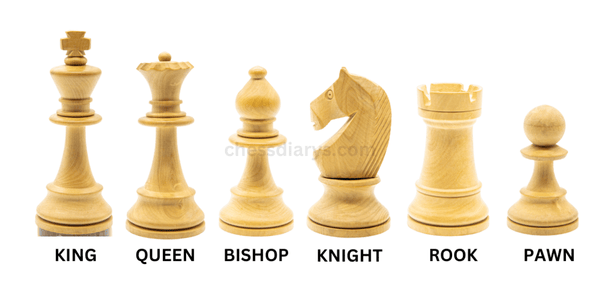
Chess Pieces:
- King: Moves one rectangular in any direction. The king is the most essential piece; if it is checkmated, the sport ends.
- Queen: Moves any wide variety of squares in any course (horizontally, vertically, or diagonally). It is the most effective piece on the board.
- Rook: Moves any range of squares horizontally or vertically. Each participant begins with two rooks, positioned in the corners of the board.
- Bishop: Moves diagonally any range of squares. Each participant begins with two bishops, one on a mild rectangular and one on a darkish square.
- Knight: Moves in an L-shape: two squares in one path and then one square perpendicular. Knights are unique in their capability to “jump” over different pieces.
- Pawn: Moves one rectangular ahead however captures diagonally. Pawns have the extraordinary capability to go two squares ahead from their beginning function and can be promoted to any piece upon achieving the opponent’s again rank.
Each piece has a special motion pattern, which contributes to the strategic depth of chess.
Facts About Chess:
- Number of Possible Moves: The range of viable strikes in a chess sport is astronomically high, estimated to be extra than 10^120, a long way surpassing the wide variety of atoms in the observable universe.
- World Chess Championship: The first legit World Chess Championship used to be held in 1886, and it has in view that end up one of the most prestigious titles in the game.
With this foundational knowledge, you’re equipped to dive into putting up the chessboard and getting to know the regulations of the game.
Setting Up the Chessboard
Chessboard Layout
Setting up the chessboard efficiently is essential for beginning the sport properly. Here’s how to prepare the pieces:
1.Position the Board: Place the chessboard so that every participant has a white rectangular on their right-hand facet corner.
2.Set Up the Back Rank:
- Rooks: Place the rooks on the corners of the board.
- Knights: Next to the rooks, region the knights.
- Bishops: Place the bishops subsequent to the knights.
- Queen: The queen goes on the rectangular of her very own coloration (white queen on white square, black queen on black square).
- King: Place the king on the ultimate rectangular beside the queen.
3.Set Up the Pawns: Position all eight pawns on the 2d row (from every player’s perspective).
Visual Representation:
Here is a simplified visible setup of a chessboard:
| R | N | B | Q | K | B | N | R |
| p | p | p | p | p | p | p | p |
| . | . | . | . | . | . | . | . |
| . | . | . | . | . | . | . | . |
| . | . | . | . | . | . | . | . |
| . | . | . | . | . | . | . | . |
| p | p | p | p | p | p | p | p |
| r | n | b | q | k | b | n | r |
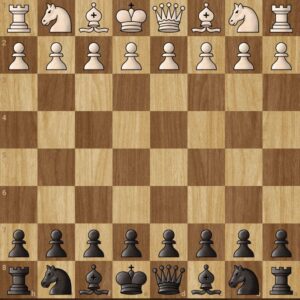
Key:
- R = Rook
- N = Knight
- B = Bishop
- Q = Queen
- K = King
- P = Pawn
- . = Empty rectangular
- Lowercase letters characterize black pieces, and uppercase letters symbolize white pieces.
Understanding Chess Notation
Chess notation is a gadget used to file and describe the strikes in a chess game. The most frequent notation machine is algebraic notation.
- Files and Ranks: The chessboard is divided into documents (columns) labeled a to h and ranks (rows) numbered 1 to 8.
- Piece Notation: Each piece is recognized by means of a letter (R for rook, N for knight, B for bishop, Q for queen, and K for king). Pawns are now not labeled; their strikes are recognized by way of the vacation spot square.
- Move Notation: Moves are recorded with the piece’s letter and the vacation spot square. For example, “Nf3” skill a knight strikes to rectangular f3. Captures are stated with an “x,” such as “Bxg5,” indicating a bishop captures a piece on g5.
- Special Moves:
- Castling: Noted as “O-O” for kingside castling or “O-O-O” for queenside castling.
- En Passant: Recorded as “exd6 e.p.” for a pawn seize en passant.
- Promotion: Indicated through including the piece the pawn is promoted to, e.g., “e8Q” for merchandising a pawn to a queen.
Example Move Sequence:
- e4: White strikes pawn to e4.
- e5: Black strikes pawn to e5.
- Nf3: White strikes knight to f3.
- Nc6: Black strikes knight to c6.
Understanding how to set up the board and use chess notation is critical for beginners. With this knowledge, you are well-prepared to begin mastering the guidelines and techniques of chess.
Basic Chess Rules
Objective of the Game
The last intention of chess is to checkmate your opponent’s king. Checkmate happens when the king is in a function to be captured (“in check”) and there is no felony cross to get away the hazard of capture. The recreation ends without delay when a player’s king is checkmated.
Check vs. Checkmate:
- Check: When a king is underneath immediately chance of capture. The participant have to make a pass to do away with the threat.
- Checkmate: When the king is in test and there are no feasible strikes to break out the threat, main to the quit of the game.
Legal Move
Each piece in chess has its personal special motion pattern:
Basic Chess Rules
Objective of the Game
The last intention of chess is to checkmate your opponent’s king. Checkmate happens when the king is in a function to be captured (“in check”) and there is no felony cross to get away the hazard of capture. The recreation ends without delay when a player’s king is checkmated.
Check vs. Checkmate:
- Check: When a king is underneath immediately chance of capture. The participant have to make a pass to do away with the threat.
- Checkmate: When the king is in test and there are no feasible strikes to break out the threat, main to the quit of the game.
Legal Move
Each piece in chess has its personal special motion pattern:
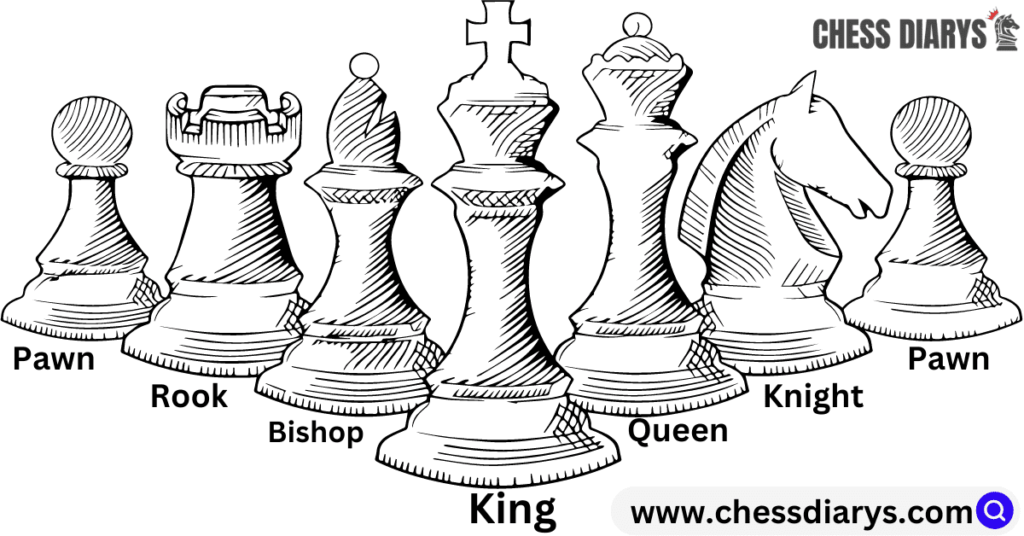
- King: Moves one rectangular in any route (horizontally, vertically, or diagonally). It can’t go to a rectangular that is beneath attack.
- Queen: Moves any range of squares in any direction. The queen combines the strength of the rook and bishop.
- Rook: Moves any quantity of squares horizontally or vertically. Rooks are effective in open strains and ranks.
- Bishop: Moves diagonally any variety of squares. Each participant begins with one bishop on mild squares and one on darkish squares.
- Knight: Moves in an L-shape: two squares in one course and then one rectangular perpendicular. Knights can leap over different pieces, making them versatile in crowded positions.
- Pawn: Moves one rectangular ahead however captures diagonally. On its first move, a pawn can boost two squares. Pawns can be promoted to any different piece (except a king) upon attaining the opponent’s again rank.
Special Moves:
- Castling: A go involving the king and one of the rooks. It is the solely cross the place two portions go simultaneously. Castling is performed to shield the king and increase the rook. It can only be carried out if neither the king nor the chosen rook has moved before, and there are no portions between them. Castling kingside is denoted by way of “O-O,” and queenside via “O-O-O.”
- En Passant: A one-of-a-kind pawn seize that takes place when a pawn strikes two squares ahead from its beginning role and lands beside an opponent’s pawn. The opponent can seize the pawn as if it had moved solely one square. This seize have to be carried out without delay after the two-square move.
- Promotion: When a pawn reaches the opponent’s lower back rank, it can be promoted to any piece barring a king. Most commonly, pawns are promoted to queens.
The End of the Game
Checkmate: Ends the sport with a win for the participant handing over the checkmate.
Stalemate: A scenario the place a player, whilst no longer in check, has no prison strikes left. This effects in a draw.
Draw Conditions:
- Threefold Repetition: The identical function happens three instances with the equal participant to move.
- Insufficient Material: Not ample portions on the board to pressure a checkmate (e.g., solely kings left).
- Fifty-Move Rule: If fifty strikes manifest via every participant except any pawn motion or capture, both participant can declare a draw.
Examples of Endgames:
- King and Pawn vs. King: The participant with the pawn objectives to promote it to a queen and supply checkmate.
- King and Rook vs. King: The participant with the rook need to use it to avoid the opposing king’s motion and supply checkmate.
Mastering these simple regulations is crucial for all people gaining knowledge of chess for beginners. They structure the basis of your chess information and strategy.
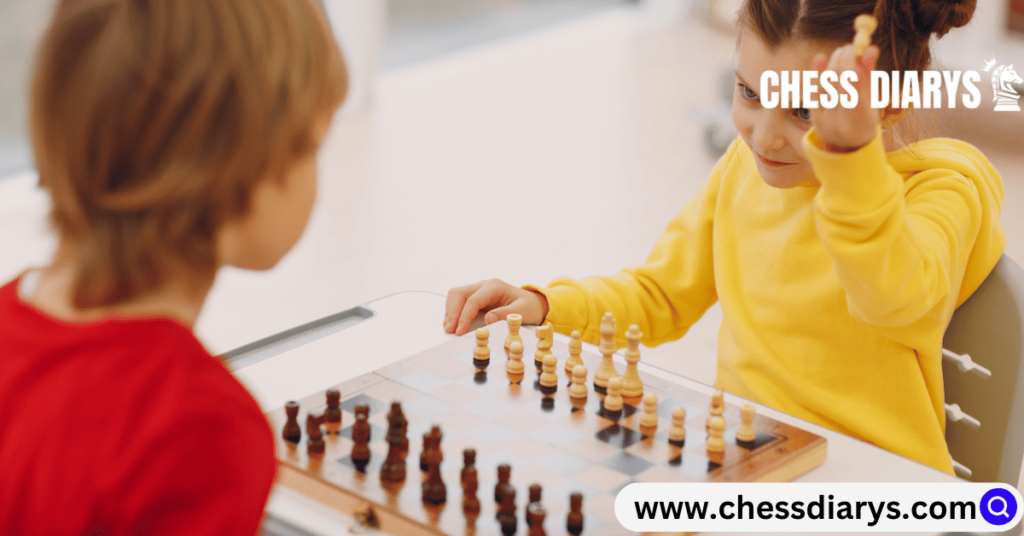
Chess for Beginners: Essential Strategies
Opening Principles
The opening segment of chess is indispensable as it units up your function for the center game. Here are some key standards to follow:
- Control the Center:
- Objective: Occupy or manipulate the central squares (d4, d5, e4, e5) to acquire a strategic advantage.
- Benefit: Controlling the middle approves your portions higher mobility and have an impact on over the board.
- Develop Your Pieces:
- Objective: Move your portions (knights and bishops) from their beginning positions to extra energetic squares.
- Benefit: Early improvement prepares you for the center recreation and helps manipulate key squares.
- Safeguard the King:
- Objective: Castle early to go your king to a safer role and join your rooks.
- Benefit: Castling offers king security and brings a rook into play.
- Avoid Moving the Same Piece Multiple Times:
- Objective: Develop new portions as an alternative than many times shifting one piece.
- Benefit: Efficient improvement maximizes piece exercise and manage over the board.
Popular Beginner Openings:
- King’s Pawn Opening (1.e4):
Moves the pawn in the front of the king two squares forward. Opens traces for the queen and bishop and pursuits for manipulate of the center.
- Queen’s Pawn Opening (1.d4):
Moves the pawn in the front of the queen two squares forward. Focuses on central manipulate and prepares for strong development.
- Knight’s Opening (1.Nf3):
Develops the knight to an lively square, aiming for bendy improvement and
manipulate of the center.
Opening Example:
- e4 e5
- Nf3 Nc6
- Bb5 a6
- Ba4 Nf6
This sequence is the establishing of the Ruy Lopez opening, a famous and well-studied opening that goals for manage of the middle and speedy development.
Middle Game Tactics
The center sport is the place most of the tactical play occurs. Here are some vital methods to understand:
- Pins:
- Definition: When a piece is immobilized due to the fact transferring it would expose a greater precious piece at the back of it.
- Example: If a rook is pinned to the king by way of a bishop, the rook can’t pass except placing the king in check.
- Forks:
- Definition: A cross that assaults two or extra of the opponent’s portions simultaneously.
- Example: A knight positioned in the middle can fork an opponent’s queen and rook.
- Skewers:
- Definition: When a treasured piece is attacked and should move, revealing a much less treasured piece in the back of it.
- Example: A bishop attacking a queen, forcing it to go and exposing a rook.
- Discovered Attacks:
- Definition: When transferring one piece uncovers an assault from every other piece.
- Example: Moving a pawn can disclose a test from a rook or bishop.
Common Middle Game Strategies:
- Pawn Structure: Maintain a robust pawn shape to aid your portions and manipulate key squares. Avoid growing weaknesses such as remoted or doubled pawns.
- Piece Activity: Aim to have your portions actively taking part in the game. Avoid passive placements and strive to manage open documents and diagonals.
Endgame Techniques
The endgame is the closing segment of the game, the place fewer portions continue to be on the board. Key methods include:
- King and Pawn Endgames:
- Objective: Promote your pawn to a queen whilst the use of your king to guide its advancement.
- Key Position: If you can increase a pawn to the seventh rank, it frequently ensures advertising to a queen.
- King and Rook Endgames:
- Objective: Use your rook and king to nook the opponent’s king and supply checkmate.
- Technique: Coordinate your rook and king to push the opponent’s king to the area of the board and checkmate it.
- Basic Checkmates:
- King and Queen vs. King: Checkmate through putting the opposing king in a nook and the usage of the queen to supply the closing blow.
- King and Rook vs. King: Use the rook to reduce off the opponent’s king and step by step pressure it to the aspect of the board.
Endgame Example:
- King and Pawn vs. King:
If your pawn is on the sixth rank and the opposing king is on the seventh rank, use your king to block the opponent’s king and promote the pawn.
Understanding these fundamental techniques and methods will provide you a stable basis as you development in chess.
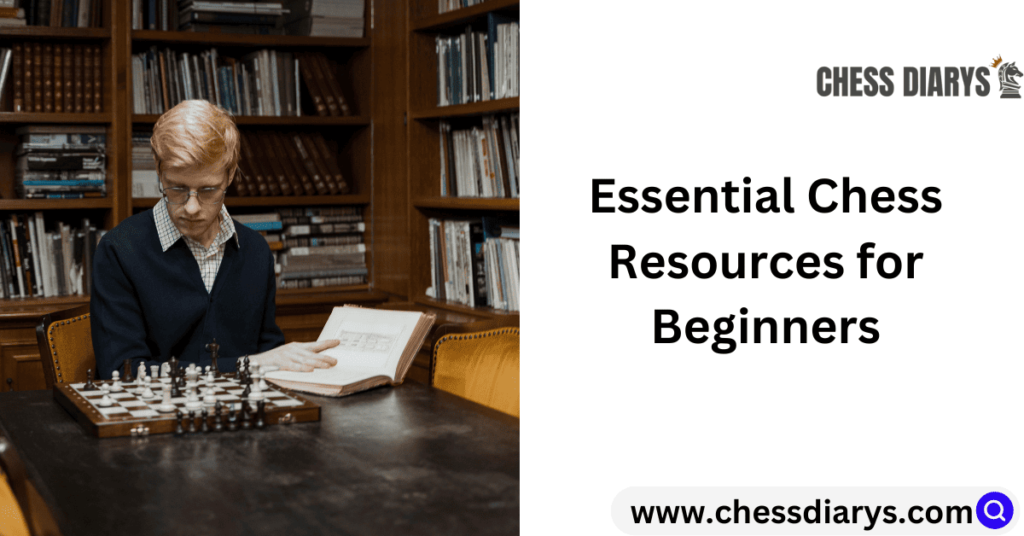
Essential Resources for Chess for Beginners
Books for Chess Beginners
- “Chess for Dummies” by way of James Eade:
- Overview: A complete introduction to chess, masking the rules, strategies, and fundamental approaches in a beginner-friendly format.
- Why Read: Ideal for these new to chess who want a easy and handy information to the game.
- “Bobby Fischer Teaches Chess” via Bobby Fischer:
- Overview: A basic e book focusing on indispensable standards and techniques taught through one of the biggest chess gamers of all time.
- Why Read: Provides realistic instructions and workouts to construct a stable basis in chess.
- “The Complete Idiot’s Guide to Chess” by means of Patrick Wolff:
- Overview: A distinctive information that explains chess principles and techniques in an easy-to-understand manner.
- Why Read: Offers clear explanations and realistic hints for novices searching to enhance their game.
- “Logical Chess: Move via Move” by means of Irving Chernev:
- Overview: Analyzes traditional video games move-by-move to exhibit key standards and strategies.
- Why Read: Helps gamers apprehend the reasoning in the back of every pass and strengthen strategic thinking.
Common Chess Mistakes and How to Avoid Them
Frequent Mistakes Made by way of Beginners
- Neglecting Piece Development:
- Mistake: Moving the identical piece a couple of instances in the opening or failing to increase portions from their beginning positions.
- Consequence: Results in a lack of manage over the board and can go away you inclined to attacks.
- Solution: Focus on growing knights and bishops early and avoid transferring the equal piece repeatedly in the opening phase.
- Ignoring King Safety:
- Mistake: Delaying castling or neglecting king security throughout the opening and center game.
- Consequence: Exposes the king to conceivable threats and attacks, main to feasible checkmates or loss of material.
- Solution: Castle early to impervious your king’s function and create a stable shielding setup.
- Overlooking Pawn Structure:
- Mistake: Creating pawn weaknesses such as remoted pawns, doubled pawns, or pawn chains with gaps.
- Consequence: Weakens your role and can lead to vulnerabilities that opponents can exploit.
- Solution: Aim to hold a sturdy and cohesive pawn structure, keep away from pointless pawn moves, and restoration weaknesses promptly.
- Failing to Notice Opponent’s Threats:
- Mistake: Not paying interest to your opponent’s viable threats or moves.
- Consequence: Can end result in dropping fabric or falling into tactical traps.
- Solution: Regularly scan the board for threats and make sure every pass is secure and does now not fall into an opponent’s tactic.
- Misplacing Pieces:
- Mistake: Placing portions on squares the place they are effortlessly attacked or have restrained activity.
- Consequence: Reduces the effectiveness of your portions and may additionally lead to dropping manipulate of necessary squares.
- Solution: Develop portions to lively and strategic squares the place they manipulate key areas and make contributions to your basic plan.
How to Correct Common Mistakes
- Play with Purpose:
- Strategy: Approach every recreation with a graph and purpose. Avoid making strikes barring thinking about their impact.
- Benefit: Helps you remain centered and make greater strategic decisions.
- Learn from Your Games:
- Strategy: After every game, evaluate your strikes and pick out mistakes. Use evaluation equipment to apprehend the place you went wrong.
- Benefit: Provides insights into your weaknesses and areas for improvement.
- Practice Endgames:
- Strategy: Spend time practising frequent endgames and getting to know the vital techniques.
- Benefit: Improves your capacity to convert benefits and win video games in the endgame phase.
- Study Common Tactics:
- Strategy: Familiarize your self with frequent tactical motifs like forks, pins, and skewers thru puzzles and exercises.
- Benefit: Enhances your potential to spot and use tactical opportunities in the course of games.
- Seek Feedback:
- Strategy: Play with improved gamers and searching for their comments on your video games and strategies.
- Benefit: Provides treasured insights and preparation on how to enhance your play.
Example Mistake Correction Plan:
- Daily:
- Review 1-2 of your current video games to pick out mistakes.
- Solve five tactical puzzles to strengthen sample recognition.
- Weekly:
- Study 1 frequent tactical motif in-depth and exercise associated puzzles.
- Analyze a recreation from a well-known participant to recognize superior strategies.
- Monthly:
- Play a few rated video games to take a look at and practice new strategies.
- Participate in a neighborhood or on-line event to acquire trip and discover areas for improvement.
By recognizing and addressing these frequent mistakes, you will decorate your perception of chess and grow to be a greater professional player.
Chess Etiquette and Etiquette
Basic Chess Etiquette
- Respect Your Opponent:
- Behavior: Always be courteous and respectful to your opponent, regardless of the result of the game.
- Benefit: Creates a fine and sportsmanlike environment, bettering the typical chess experience.
- Adhere to the Rules:
- Behavior: Follow the policies of chess and any extra regulations set through the event or recreation platform.
- Benefit: Ensures honest play and keeps the integrity of the game.
- Avoid Distractions:
- Behavior: Keep your cellphone off or silent and keep away from distracting your opponent all through the game.
- Benefit: Helps preserve center of attention and recognize all through the game.
- Use Proper Notation:
- Behavior: If required, use algebraic notation to report your strikes all through over-the-board games.
- Benefit: Facilitates correct record-keeping and evaluation of the game.
Tournament Etiquette
- Arrive On Time:
- Behavior: Arrive at the venue on time to keep away from delays and make certain you’re prepared to begin your game.
- Benefit: Demonstrates punctuality and recognize for the tournament schedule.
- Understand Tournament Rules:
- Behavior: Familiarize your self with the particular guidelines and rules of the match you are taking part in.
- Benefit: Ensures compliance and helps keep away from any doable problems in the course of the tournament.
- Handle Wins and Losses Gracefully:
- Behavior: Accept victories and defeats with dignity. Offer a handshake and congratulate your opponent.
- Benefit: Maintains a nice and respectful ecosystem in aggressive settings.
- Maintain Board Cleanliness:
- Behavior: Ensure that the chessboard and portions are saved easy and in appropriate condition.
- Benefit: Contributes to a expert and equipped environment.
By adhering to acceptable chess etiquette, you make contributions to a respectful and fun chess environment.


